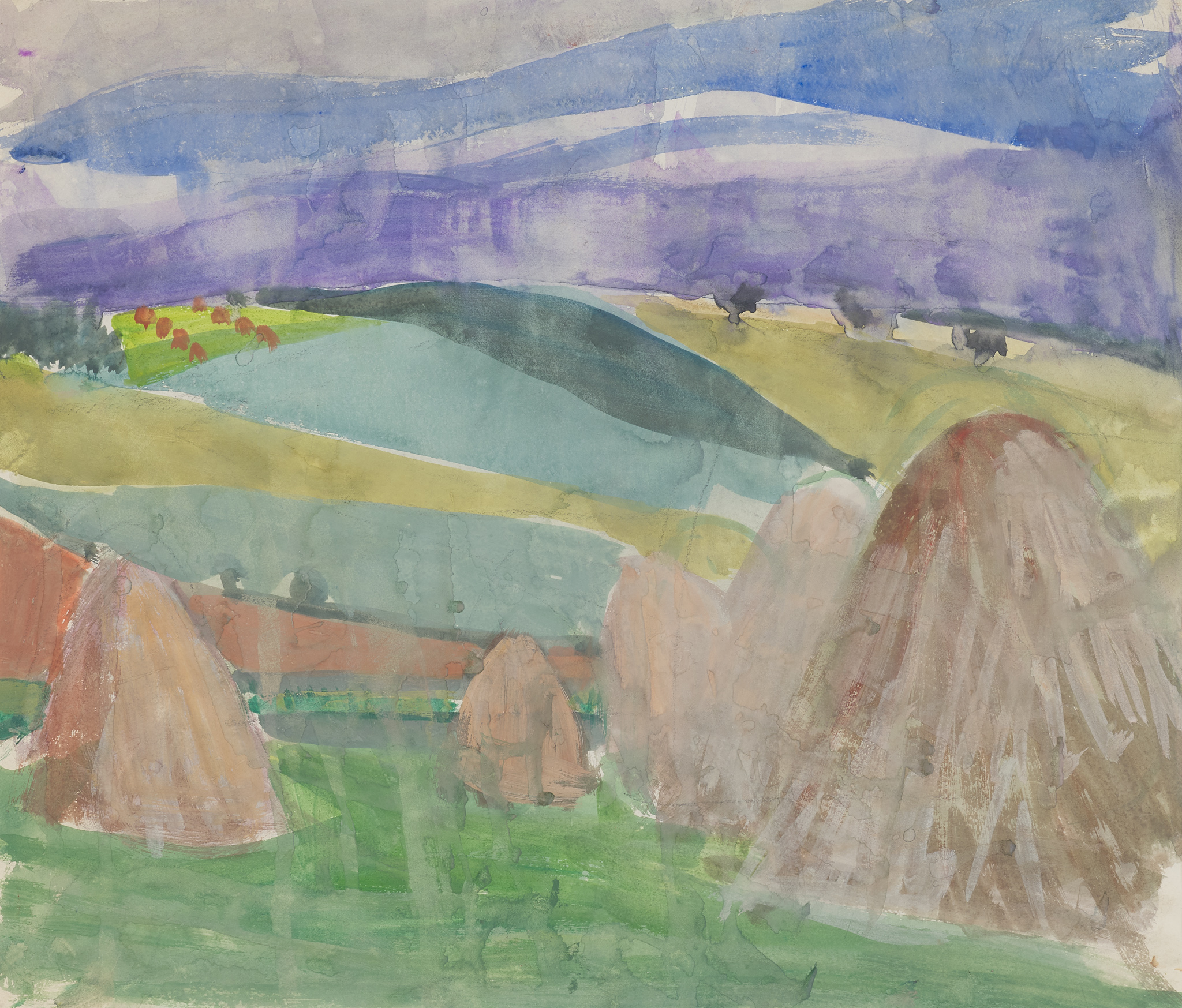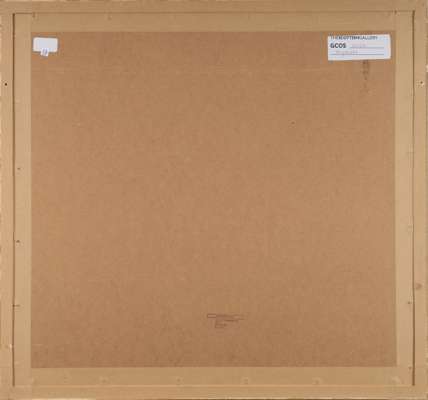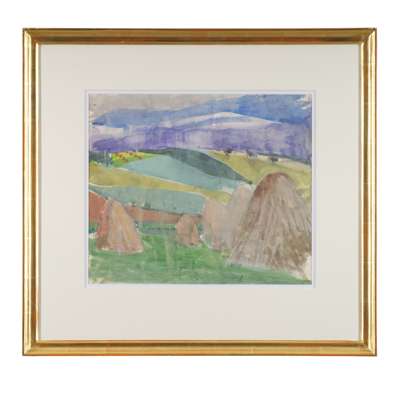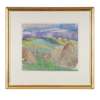
Lot 103

ANNE REDPATH O.B.E., R.S.A., A.R.A., A.R.W.S., L.L.D., R.O.I., R.B.A. (SCOTTISH 1895-1965) §
HAYSTACKS








Scottish Paintings & Sculpture
Auction: Day Sale | Lots 1 to 108 | Thursday 04 December 2025 from 2pm
Description
Watercolour
Dimensions
36cm x 43cm (14in x 17in)
Provenance
The Scottish Gallery, Edinburgh (GCOS 26548)
Footnote
Anne Redpath is widely recognised as the doyenne of post-Second World War Scottish painting. She trained at Edinburgh College of Art and began her career in the city showing at the Royal Scottish Academy and Society of Scottish Artists annual exhibitions and as an invited artist with the Edinburgh Group.
Following her marriage in 1920, Redpath lived in France for fourteen years, where her three sons were born. The watercolour Behind the Old Church, Villefranche of 1934 dates from towards the end of her time there. It reveals not only the maintenance of her practice whilst juggling domestic responsibilities, but also the clarity and deftness of line which singled her out as a draughtsperson of excellence. Haystacks underlines her skills as a watercolourist, filling swathes of the support with colour fields and manipulating varying levels of saturation in passages such as the lower sky to great effect.
On returning to Scotland, Redpath resumed painting in earnest and re-connected with Edinburgh’s artistic community, from a base in Hawick in the Borders. It is from this period that the delightful Spring Flowers in a Jug dates, full of the joie de vivre of the new season. A similar enjoyment of the aesthetic properties of flower heads and petals can be seen in the later Spring Flowers in which the energetic and generous application of paint combines bright and muted tones to create a strikingly modern image.
As her career gathered momentum, Redpath moved to the southside of Edinburgh in 1949 and to the New Town in 1952, where she lived until her death. Regular solo exhibitions were held in the Scottish capital and in London and she was elected to the Royal Scottish Academy and Royal Academy – amongst other honours recognising her professional achievements.
Redpath began to travel abroad once more, including to France and Spain. She made notes, drawings and watercolours on the spot, which she worked up into paintings, such as Andalusia, on returning to her studio in Edinburgh. This painting is exemplary of the brilliant light, warm sunshine, expressive rendering of the countryside and simplification of architectural form that is characteristic of her landscapes.
Flowers in a Blue and White Vase shows how Redpath continued to develop her practice, during this later period working with a freer, more abstract approach to spatial setting, a powerful palette, an energetic manipulation of her medium and an ever-present celebration of the beauty of cut flowers arranged in a patterned vessel.
Redpath’s death in Edinburgh in 1965 was marked in multiple ways: memorial displays and exhibitions were mounted by the Royal Scottish Academy, the Scottish Gallery and the Scottish Arts Club. The Scottish Committee of the Arts Council of Great Britain mounted a major memorial exhibition of eighty-six works, which opened in Edinburgh before touring to eleven other venues. A retrospective exhibition of Redpath’s work was held at the Scottish National Gallery of Modern Art in 1997.








